News:
New Online Resource to Reveal Stories about Nazi-Looted Art, Wartime Art Market
By Annelisa Stephan

Paintings in storage at the Munich Central Collecting Point, ca. 1945–49, Johannes Felbermeyer. This was one of several sites used by the Allies to identify, photograph, and restitute Nazi-seized artworks after the war. Photo Study Collection. The Getty Research Institute, 89.P.4
Six decades after the end of World War II, thousands of artworks stolen by the Nazis from Jews and other victims remain unidentified in private collections and in museums, libraries, and archives around the world. A new, free online resource may help unite these with their rightful owners, as well as advance art historical scholarship.
Available via the Getty Provenance Index®, German Sales Catalogs, 1930-1945 is a searchable trove of over 2,000 newly digitized sales catalogs published in Germany, Austria, Switzerland, and German-occupied territories between 1930 and 1945. Starting in Germany in the early 1930s and continuing across Europe throughout the war, the Nazis engaged in massive-scale looting of art and objects from homes, galleries, and museums. Many of the objects not kept for Hitler’s planned museum, including artworks declared to be “degenerate,” were sold at auction, and the catalogs from these sales provide critical evidence for objects’ prewar ownership as well as clues to their trajectories and even possible current whereabouts. The catalogs—many of which include detailed object descriptions and handwritten annotations about sale prices and buyers’ names—are also rich primary sources for art historians, helping reveal the stories of galleries, dealers, and collectors whose influence continues to resonate in the art world.
The project brings together holdings from 35 German, Swiss, and Austrian institutions, with the bulk of the catalogs drawn from the collections of the Getty Research Institute’s project partners, the art library (Kunstbibliothek) of the National Museums in Berlin and University Library at Heidelberg. The Heidelberg library used a rigorous process (detailed here) to digitize some 150,000 pages and make them searchable using text generated via optical character recognition (OCR). All this data was then incorporated into the Getty Provenance Index®, the Research Institute’s open-access collection of databases on the history of artwork ownership from 1600 to 1900.
Editors at the Research Institute worked for two years to make the data more complete and easier to use, correcting OCR errors and entering sales prices from art journals such as Weltkunst and Internationale Sammlerzeitung. The addition of these combined records not only brings the Provenance Index firmly into the 20th century, but also increases its volume to over 1.5 million records.
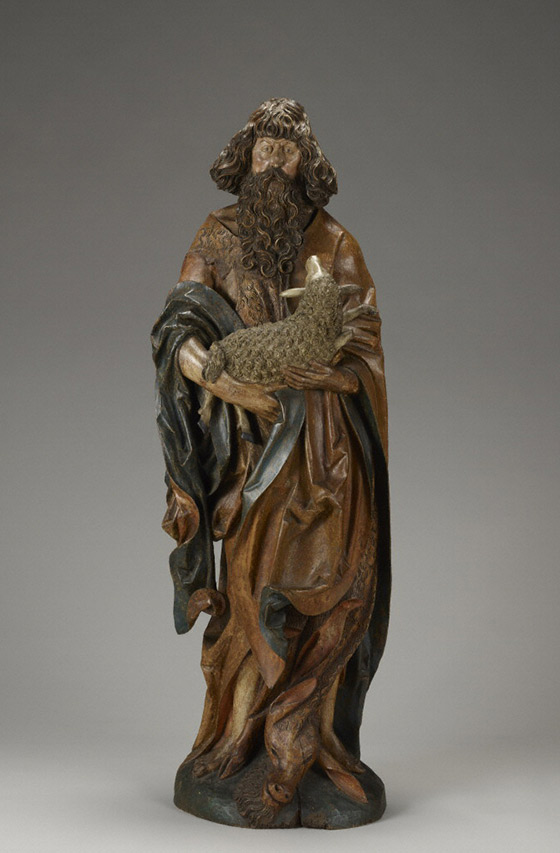
Saint John the Baptist, about 1515, Master of the Harburger Altar. Partially polychromed limewood, 59 7/8 in. high. The J. Paul Getty Museum, 2012.1
The Nazi-era provenance of the Getty Museum’s collection has been extensively researched, but the database will help us understand the story of certain objects more fully. For example, the Museum recently purchased the beautiful south German wood sculpture shown above from the heirs of its original owners, to whom it was restituted in 2011 at the initiative of the Landesmuseum Württemberg in Stuttgart. A 1937 auction catalog lets us trace the sculpture to the Galerie Altkunst in Berlin, owned by prominent German-Jewish gallerists Jacob and Rosa Oppenheimer. It also reveals the value estimated by the auction house of Dr. Walther Achenbach, where it went under the hammer: 1200 Reichsmark, or $482 (some $8,000 in today’s dollars). Another catalog tells us much more about the Galerie Altkunst, including its areas of focus; and still others show that the Achenbach auction house was busy throughout the 1930s selling not only artworks, but also the entire contents of Jewish homes, from furniture and rugs to dishware and even the occasional Frigidaire.
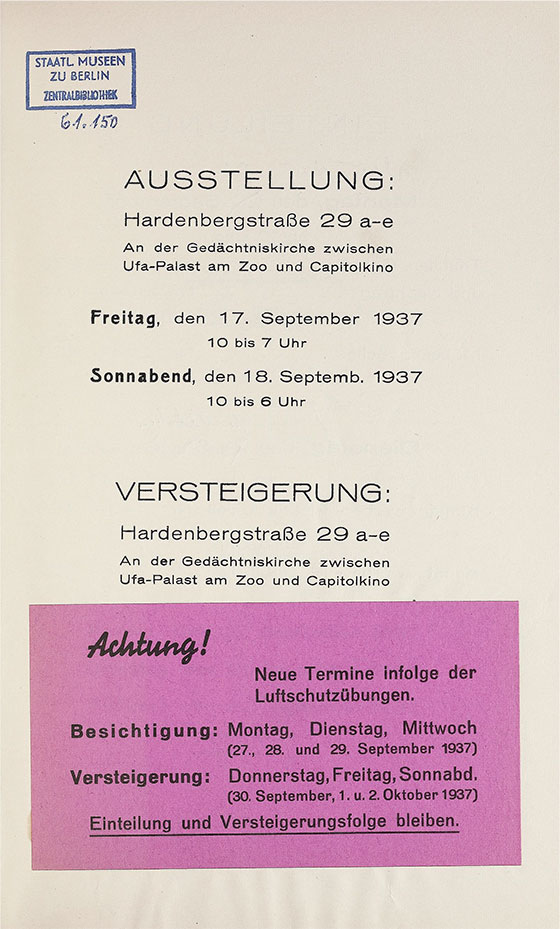
Title page of a 1937 catalog from the Achenbach auction house showing the date for the auction of the St. John and other items from the Galerie Alkunst. The pink sticker indicates that the auction was postponed from its original date due to air-raid drills. (Auktionshaus Dr. Walther Achenbach, Berlin, ed: Aus den Restbeständen der Altkunst. GmbH i. Liqu. Berlin, September 30 and October 1 and 2, 1937.) Image: Universitätsbibliothek Heidelberg, CC BY-NC-SA 3.0 DE
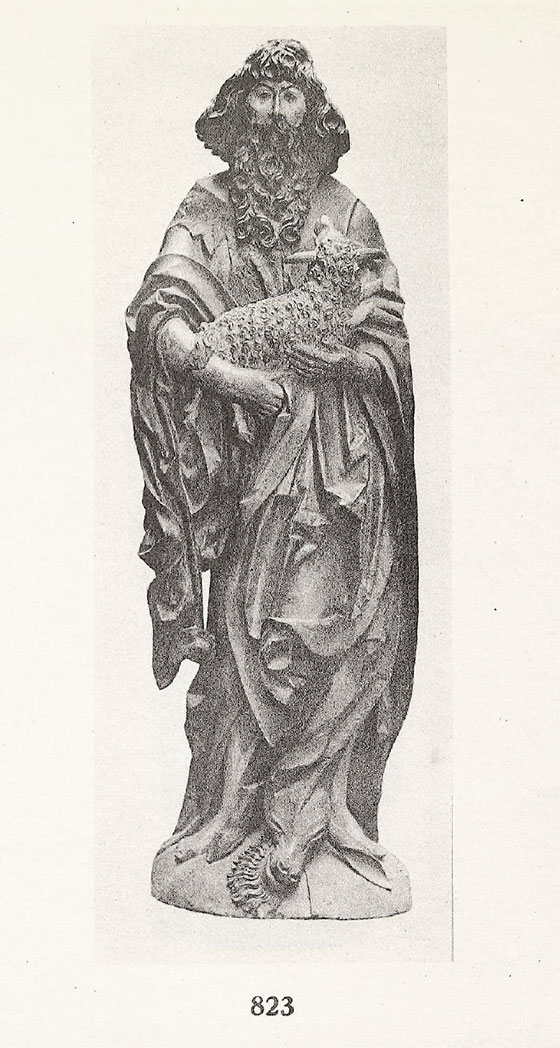
Detail of Plate 20 from the 1937 Achenbach auction catalog showing lot 823, the St. John. Image: Universitätsbibliothek Heidelberg, CC BY-NC-SA 3.0 DE
All this information is now findable in the Getty Provenance Index via a simple keyword search. The screen capture below shows how we can find the St. John by entering targeted search terms—in this example, a keyword from title of the artwork (Johannes, John in German), a medium (sculpture), a date range (1933 to 1940), the country of sale (Germany), and the subject.
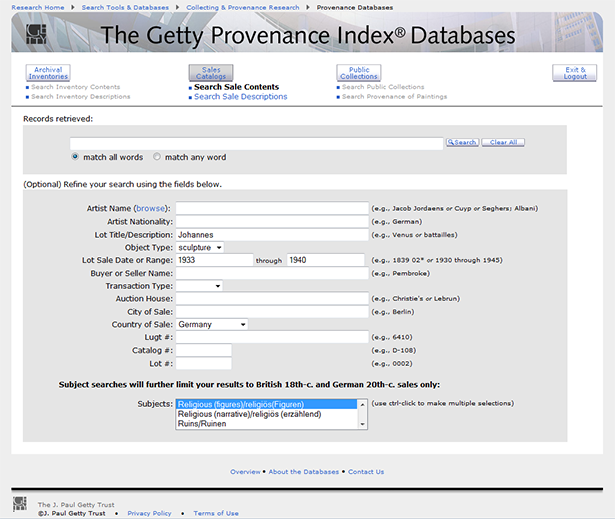
Among the many results from this query, we find a link to the following record with the full digitized text of the St. John catalog entry, which also indicates that the catalog has an illustrated plate (Tafel). A link for “Catalog PDF” provides direct access to the scanned original.
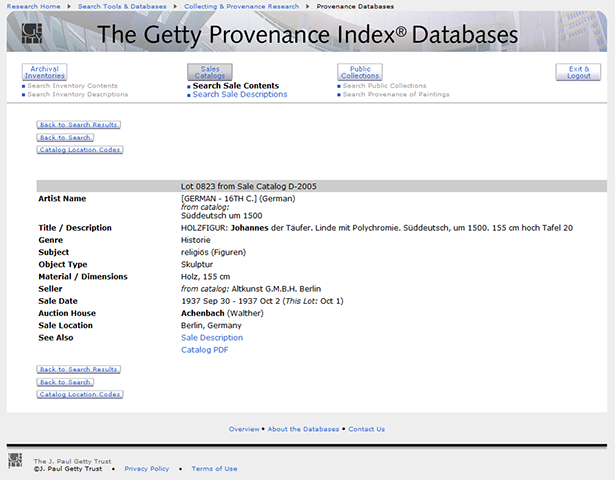
A major art historical and technical achievement, the German Sales project is the culmination of a decision made in 1998, when 44 nations, including the U.S. and Germany, promised to uphold eleven principles for the proper handling of Nazi-looted art, including making relevant records accessible for research. Fifteen years later, we’re proud to say that this is now a promise kept.


